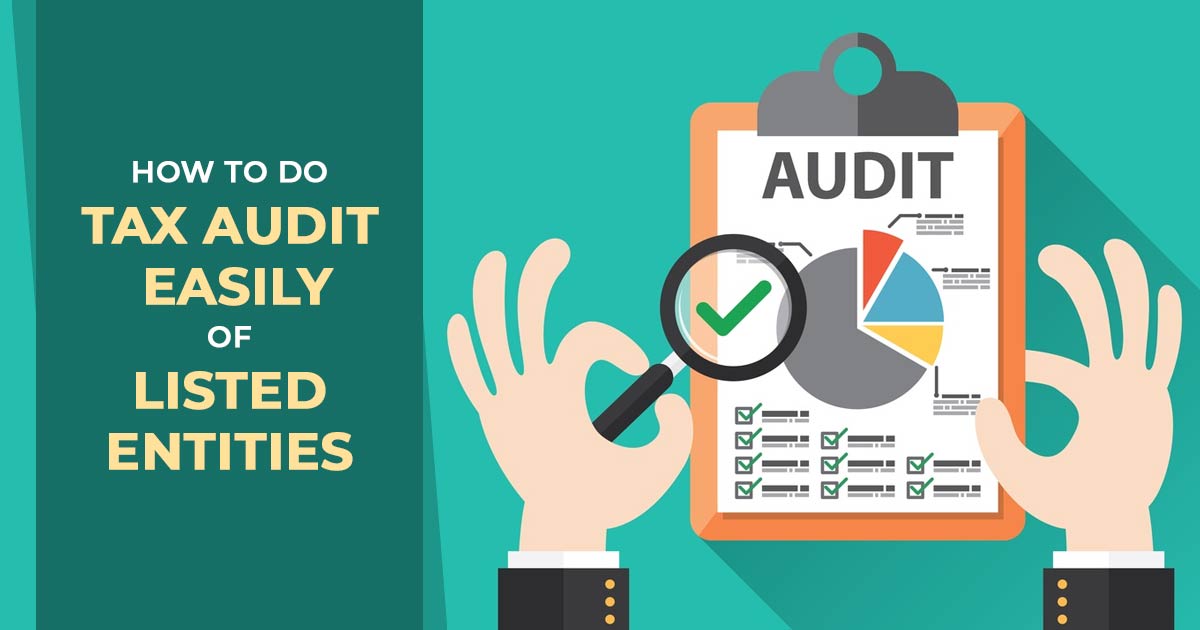
Tax Auditing a publicly traded company is a vital procedure ensuring the accuracy and trustworthiness of financial data, upholding investor trust, and market credibility. Achieving a successful audit demands meticulous planning, adherence to regulations, and effective client communication.
This article delves into the sequential approach to kick-starting a tax audit for a listed company.
Grasping Regulatory Standards
Prior to commencing the tax audit, auditors must acquaint themselves with the regulatory frameworks governing the listed entity. This involves grasping reporting norms such as the International Financial Reporting Standards (IFRS), industry-specific rules, and any pertinent legal mandates.
Strategic Planning for Engagement
Audit engagement planning is an essential phase in which the tax auditors specify the scope, goal, and audit timelines. The same comprises the understanding of the business environment, recognizing critical risk areas, and defining the materiality limits. The planning phase comprises assembling the skilled audit team, allocating responsibilities, and establishing communication channels.
Risk Evaluation
Performing a comprehensive risk evaluation is crucial for pinpointing potential threats that could affect the financial statements. This entails appraising internal control structures, gauging the risk of fraudulent activities, and comprehending the industry and economic variables influencing the entity.
Read also: Easy Way to Generate UDIN in Tax Audit via Gen Bal Software
Initial Analytical Methods
Before delving into in-depth examinations, auditors conduct initial analytical procedures to spot any irregular trends or fluctuations in the financial data. This initial step aids in grasping the business landscape and pinpointing areas warranting deeper investigation.
Significance and Planning Materiality
Establishing materiality holds immense importance in tax audit planning. Materiality refers to the scale of an error or omission in financial statements that, in the auditor’s professional assessment, could significantly influence the economic choices of a reasonable individual. This designated materiality helps gauge the importance of inaccuracies within specific accounts.
Thorough Documentation for Auditing
Maintaining meticulous records of their work is a mandatory requirement for income tax auditors. This encompasses documenting their grasp of the client’s business, risk evaluations, conducted audit procedures, and gathered evidence. Comprehensive documentation stands as a cornerstone for quality control, peer evaluations, and regulatory adherence.
Audit Approaches
Guided by the risk evaluation, auditors devise and execute substantive audit measures. This may encompass verifying transaction accuracy and completeness, validating account balances, and cross-verifying details with external entities. Additionally, auditors must evaluate the efficacy of internal controls governing financial reporting.
Interaction with Management
Throughout the audit journey, maintaining transparent dialogue with the listed entity’s management is pivotal. This involves discussing initial discoveries, addressing concerns, and seeking necessary clarifications.
Tax Audit Outcome Reporting
Upon completion of income tax audit procedures, the auditor drafts the audit report. This report includes the auditor’s judgment on the fairness of the financial statements and any significant inaccuracies detected. It stands as a crucial document that stakeholders, including investors, rely on for decision-making.
Post-Audit Review and Ongoing Rectification
Following the audit’s completion, a post-audit review becomes essential to evaluate its efficiency. This review encompasses assessing the audit team’s performance, recognizing improvement areas, and enacting modifications to elevate forthcoming audit endeavours.
Recommended: Full Guide to File Form 3CA-3CD/3CB-3CD By Gen Bal Software
Closing Remarks
Embarking on a tax audit for a listed entity necessitates precise planning, exacting execution, and adherence to professional benchmarks. Through a methodical approach, tax auditors uphold financial data integrity, safeguard investor interests, and bolster the general stability of financial markets. Sustained vigilance, adept communication, and a steadfast dedication to ongoing enhancement stand as pivotal elements for a successful audit engagement.









